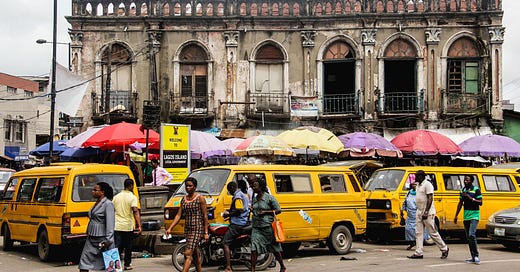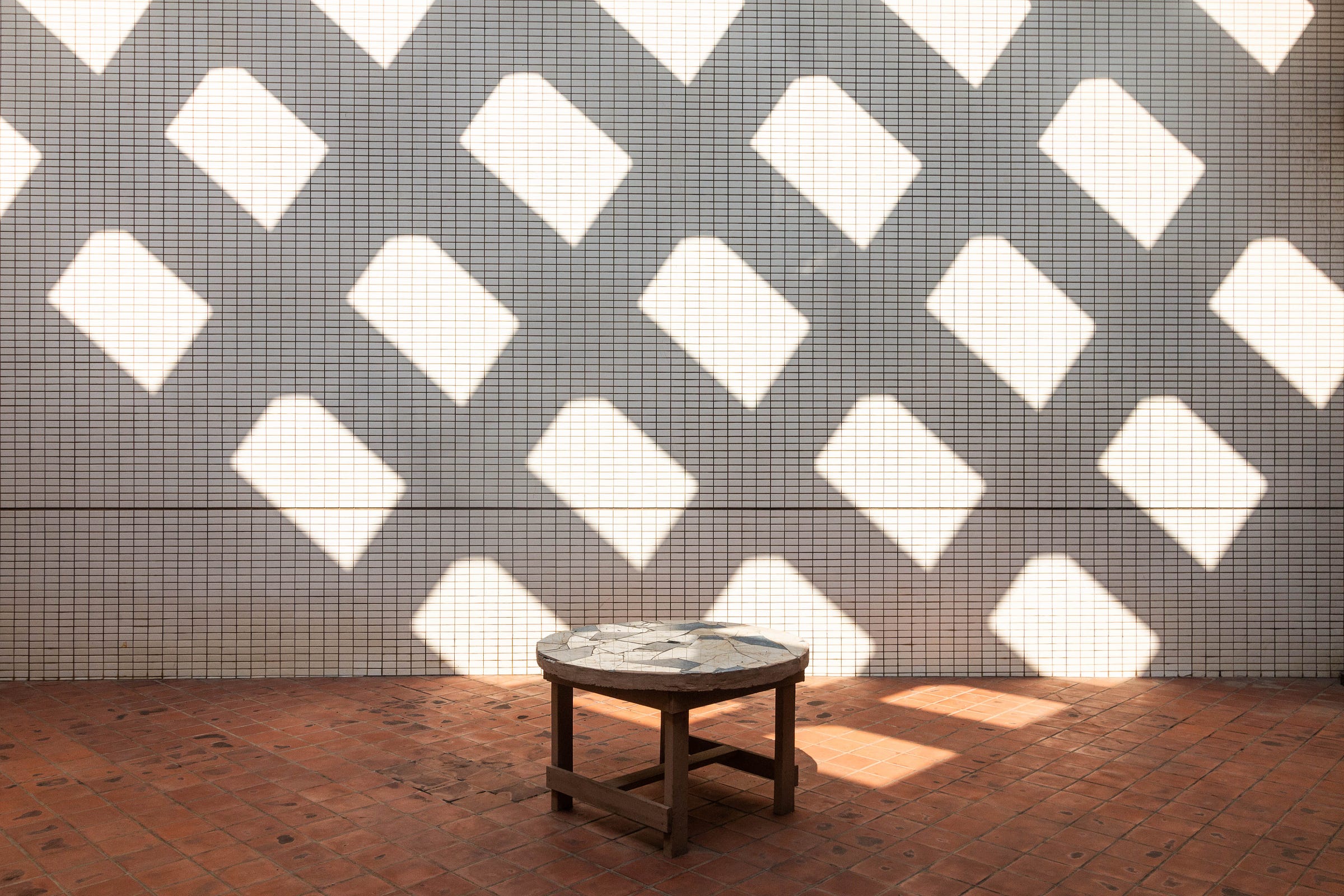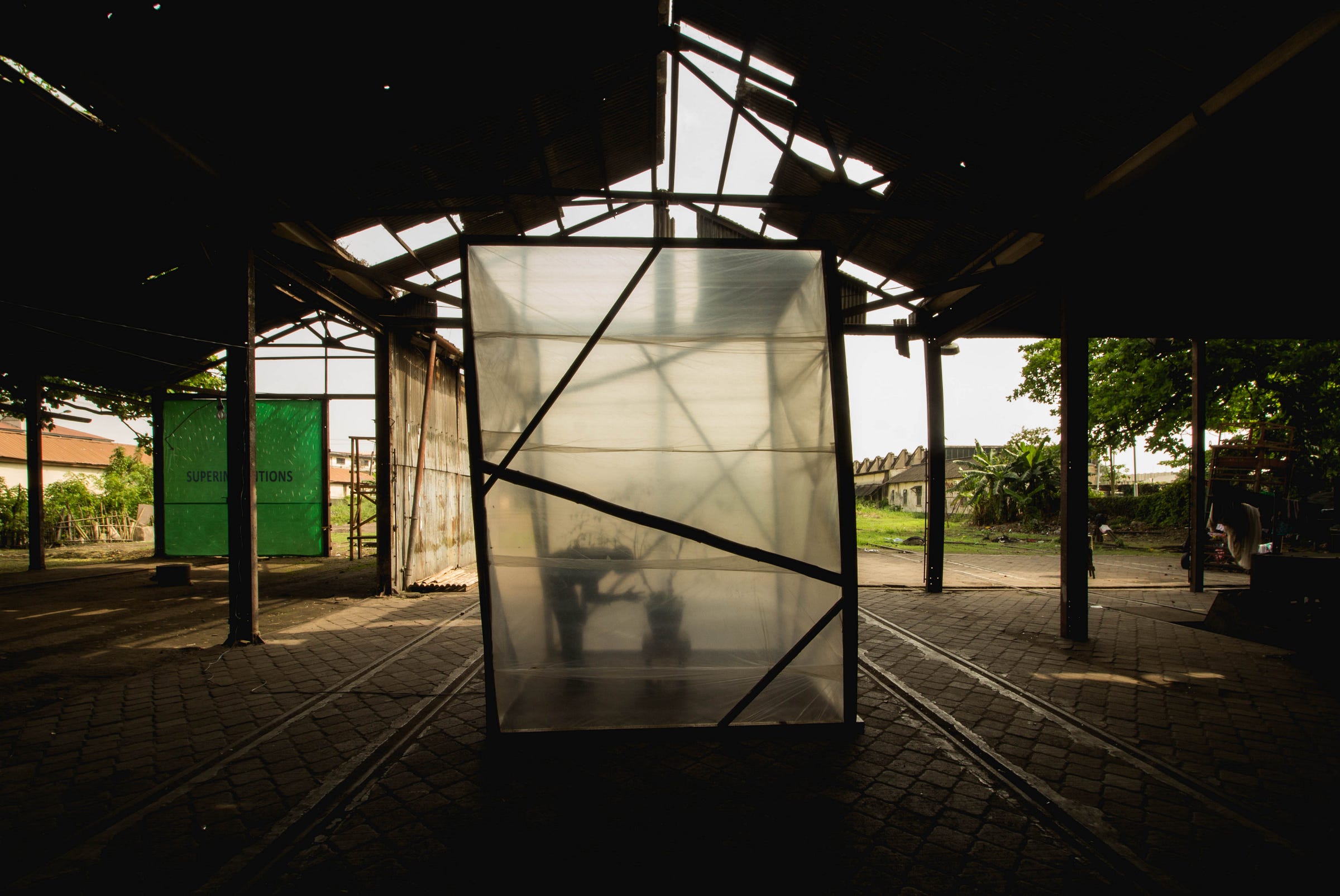The shiniest item in the photograph is a signpost. It tells where the street is to be found, and surely also tells of what, at best, is pointed to in the imagination: a previous era, and all those who are no longer walking past. But the past is not a ruin, only a time inaccessible to the present and to the future, like the moment before a motorcycle stops within a photographer’s viewfinder. The trio of buses, the canopies, the passersby, arranged like enfilades, marching along the flow of time. And time, as can equally be said of the past, flows at once in multiple directions, towards and away from chronology. Hence it is potentially true to say that, in this photograph, the building with arched windows and a petite statue trembles with life as the day it was built.
Amanda Iheme: “I stood in front of the building and click-click! Snapped!”
This photograph was taken in Tinubu Square, Lagos, in 2015.
I stood in front of the building and click-click! Snapped!
The building is dead. It was demolished in 2016 by the Lagos State Government. It had lasted for more than 200 years when it died.
I am interested in documenting built structures – mostly buildings from pre-colonial, colonial and post-colonial times. Before the 00s. I document for the purpose of preservation of these structures and for education about Nigerian architecture during these times. I do a lot of reading to support my work because I have no background in architecture and that helps a lot. It helps me frame and appreciate the work because I can understand the mindset of the architect.
Photography is valuable for preservation, immortalization. Like the building in the image above. She is dead and gone but I have images that testify to her existence and preserve her story.
Two more photographs by Amanda Iheme
The first photograph was taken at the National Theatre, Accra. The second is a documentation of Lamis Haggag’s work How do I Look on Paper? at the inaugural edition of the Lagos Biennial, 2017.
Last week — Gordwin Odhiambo
Photography as a visual medium explores more than just societal issues; being able to see the past through visuals enables us to prepare for what's to come. As a photographer, telling the stories of my community has an influence on how it's viewed. Hence, I have a responsibility to narrate my stories to the necessary audiences for collaborative purposes, [to open] doors for individuals and communities in terms of development.
Read more: Reinventing and Adapting During Coronavirus.
Support Amanda Iheme
Thank you for reading and sharing this feature on Amanda Iheme. You can see more of her work on her website.
Support Tender Photo
Welcome, new subscribers! This is the 16th edition of the newsletter. Every week I feature one photograph and the photographer who took it. You’ll read a short caption from me, and a statement from the photographer. My goal is to set up conversations with the work of early to mid-career African photographers. You can support the newsletter by asking anyone—or 10 people!—interested in the impact and meanings of photography to subscribe. And, if you know of any photographer whose work is deserving of attention, please email me with their name(s).
What others are saying:
A beautiful newsletter all about African photography. Guaranteed to introduce you to a whole new world of incredible photography. — Leland Buck, author of Neutral Density.








The photographer Amanda Iheme says the building in the first photograph is dead. I want to say - If it is dead, how come it is still standing. But not all things that manage to remain vertical are alive, we are all fighting the horizontal, everyone moving in that picture is. It reminds me of the importance of kindness and the occasional - How are you? What can I do to help?